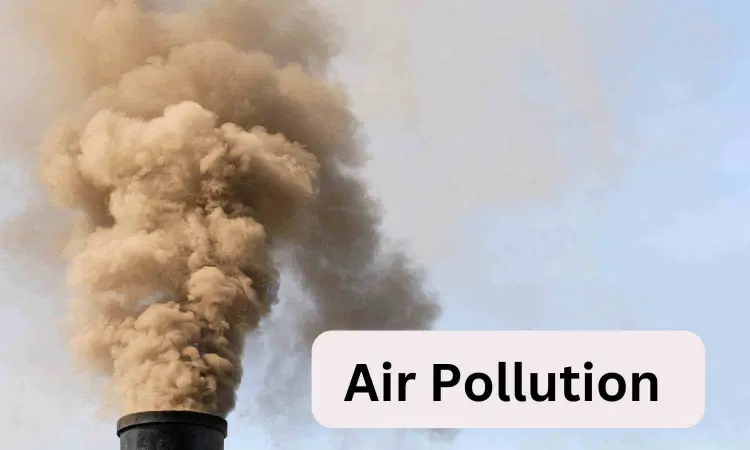- Home
- Medical news & Guidelines
- Anesthesiology
- Cardiology and CTVS
- Critical Care
- Dentistry
- Dermatology
- Diabetes and Endocrinology
- ENT
- Gastroenterology
- Medicine
- Nephrology
- Neurology
- Obstretics-Gynaecology
- Oncology
- Ophthalmology
- Orthopaedics
- Pediatrics-Neonatology
- Psychiatry
- Pulmonology
- Radiology
- Surgery
- Urology
- Laboratory Medicine
- Diet
- Nursing
- Paramedical
- Physiotherapy
- Health news
- Fact Check
- Bone Health Fact Check
- Brain Health Fact Check
- Cancer Related Fact Check
- Child Care Fact Check
- Dental and oral health fact check
- Diabetes and metabolic health fact check
- Diet and Nutrition Fact Check
- Eye and ENT Care Fact Check
- Fitness fact check
- Gut health fact check
- Heart health fact check
- Kidney health fact check
- Medical education fact check
- Men's health fact check
- Respiratory fact check
- Skin and hair care fact check
- Vaccine and Immunization fact check
- Women's health fact check
- AYUSH
- State News
- Andaman and Nicobar Islands
- Andhra Pradesh
- Arunachal Pradesh
- Assam
- Bihar
- Chandigarh
- Chattisgarh
- Dadra and Nagar Haveli
- Daman and Diu
- Delhi
- Goa
- Gujarat
- Haryana
- Himachal Pradesh
- Jammu & Kashmir
- Jharkhand
- Karnataka
- Kerala
- Ladakh
- Lakshadweep
- Madhya Pradesh
- Maharashtra
- Manipur
- Meghalaya
- Mizoram
- Nagaland
- Odisha
- Puducherry
- Punjab
- Rajasthan
- Sikkim
- Tamil Nadu
- Telangana
- Tripura
- Uttar Pradesh
- Uttrakhand
- West Bengal
- Medical Education
- Industry
Air pollution may harm children's eyesight - study

Union Health Ministry Mandates Chest Clinics, Surveillance Amid Severe Air Pollution
Air pollution may be harming children's eyesight with cleaner air helping to protect and even improve their vision - especially in younger children, a new study reveals.
Researchers have discovered that exposure to lower levels of air pollutants - specifically nitrogen dioxide (NO₂) and fine particulate matter (PM2.5) - is associated with how well children can see without glasses.
Their findings suggest that reducing exposure to these pollutants could help slow the progression of myopia or short-sightedness - when distant objects appear blurry. The condition is becoming more common in children, especially in East Asia.
An international research group comprising of experts from Tianjin Medical University, the University of Birmingham, Tianjin Medical University Eye Hospital, and Tianjin Medical University General Hospital published their findings in PNAS Nexus today (23 Sep).
The group noted that, while genetics and lifestyle factors - such as screen time on electronic devices - play a major part in whether children have myopia, environmental factors such as air pollution also matter.
Using advanced machine learning techniques, the team examined how environmental, genetic, and lifestyle factors interact to influence children’s vision development. The researchers discovered that children who lived in areas with cleaner air had better vision, after accounting for other factors.
They found that primary school students are especially sensitive to air pollution. These younger children showed the greatest improvements in uncorrected visual acuity when exposed to cleaner air.
In contrast, older students and those with high myopia were less affected by environmental changes, with their vision more strongly influenced by genetic factors - suggesting that early action-before vision problems become severe-can make a real difference.
Professor Zongbo Shi, from the University of Birmingham, who co-supervised this study, commented: “While genetics and screen time are long recognised as contributors to childhood myopia, this study is among the first to isolate air pollution as a meaningful and modifiable risk factor.
“Clean air isn’t just about respiratory health-it’s about visual health too. Our results show that improving air quality could be a valuable strategic intervention to protect children’s eyesight, especially during their most vulnerable developmental years.”
Polluted air can cause inflammation and stress in the eyes, reduce sunlight exposure - which is important for healthy eye development, and trigger chemical changes in the eye that lead to it changing shape, causing myopia.
This study suggests that installing air purifiers in classrooms, creating “clean-air zones” around schools to reduce traffic pollution, and closing streets to cars during school drop-off and pick-up times have the potential to improve eye health because children spend a lot of time at school.
Co-author Dr Yuqing Dai, from the University of Birmingham, commented: “Myopia is on the rise globally, and it can lead to serious eye problems later in life. While we can’t change a child’s genes, we can improve their environment. If we act early—before severe myopia sets in-we can make a real difference.”
Reference:
Xi Chen, Yuqing Dai, Ruihua Wei, Bei Du, Congchao Lu, A Robert MacKenzie, Nai-jun Tang, Zongbo Shi, Hua Yan, Benefits of clean air for school children's vision health, PNAS Nexus, Volume 4, Issue 9, September 2025, pgaf279, https://doi.org/10.1093/pnasnexus/pgaf279.
Dr Kamal Kant Kohli-MBBS, DTCD- a chest specialist with more than 30 years of practice and a flair for writing clinical articles, Dr Kamal Kant Kohli joined Medical Dialogues as a Chief Editor of Medical News. Besides writing articles, as an editor, he proofreads and verifies all the medical content published on Medical Dialogues including those coming from journals, studies,medical conferences,guidelines etc. Email: drkohli@medicaldialogues.in. Contact no. 011-43720751


